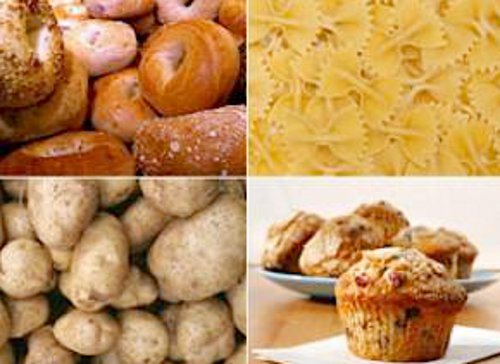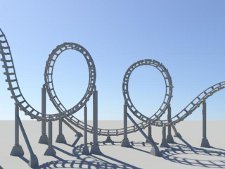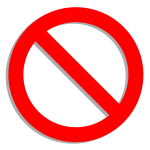
Are you looking to gain muscle mass but also shed fat? I’m going to show you a method that can work with any lifestyle and offers great results, called carbohydrate cycling. This diet works on the concept of thermogenesis.
Thermogenesis raises body temperature, which in turns raises the core temperature and bypasses the ATP syntheses channel for energy production and increases your metabolism to burn carbohydrates. On your low and no carbohydrate days you will be hitting body fat stores which will get rid of that excess fat you have been trying to lose!
Sound too Good to Be True?

Well it is not. Anyone can implement a plan like this, and I am going to show you how. The basic premise is that you’re going to cycle high carbohydrate days, low carbohydrates days, and no carbohydrate days.
One example:
Mondays – No Carb
Tuesdays –– High Carb
Wednesdays – Low Carb
Thursdays – No Carb
Fridays – High Carb
Saturdays – Low Carb
Sundays – High Carb
Notice I did not put two low carbohydrate days together. Also, I purposefully put high carbohydrates on Sunday because that is usually a family or social day. I want you to succeed. You can alter this schedule to fit your individual needs. Make sure to follow a no carbohydrate with a high carbohydrate day and never to put two of the same days back to back.
Once you find a routine that works for you (or if you use this one), you must stick to it! If you constantly change it around it will be harder to get the results you are looking for. If you have read my previous articles you know I am a big fan of keeping your body guessing, and this does exactly that!
Protein Consumption Needs to Match Body Weight

Protein is what gives muscles the materials they need to grow. Think of it as the building blocks that make up each muscle. Aim for about one gram of protein for each pound of body weight. For example, if you weigh 180 lbs then aim to eat 170 – 190 grams of protein per day. There is no maximum on protein but whatever you do, do not skimp on the protein!
Two major factors go into that protein consumption. First, it must be spread out over 5 to 6 small meals. If for some reason a meal is skipped, do not double up at the next meal. The reason for small meals is because your body can only digest so much protein in one sitting.
If you double up your body will not be able to properly use it and it will go to waste. Second, you should count only protein that comes from eggs, egg white powders, dairy, fish and meat. These proteins are digested differently than vegetable proteins.
High Carb Days
That’s right, I said it, eat your carbohydrates and do not back down. This day will also mean high calorie intake, so do not worry. On high carbohydrate days you need to consume as many carbohydrates as you need to feel satisfied at four of your meals if you’re following a six-meal plan. As I stated before, do not forget the protein.
It is easy to get out of control on high carb days. Make sure you listen to your body and when you are full, you step away from the table. It is important to understand that if you keep eating after you are full, all of your hard work will be for nothing. Your body can only take in so much and your sense of satiety is the signal that your body cannot properly digest any more food.
If you choose to have one of your carbohydrate meals before a workout, make sure you give your body plenty of time to digest. I would recommend you use the pre-workout meal as one of your lower carbohydrate meals and after your workout has a high carbohydrate meal.
Low Carb Days
Carbohydrates are important for energy and the release of insulin. Insulin is important because it helps muscles uptake the protein to help them repair and grow.
On the low days you want to take in carbohydrates during two meals if you are eating five per day or three meals if you are following a six-meal plan. One of those meals HAS to be after your workout! Very important.
Aim for one gram of carbohydrate per pound of your body weight and divide that by two or three depending on how many meals you are eating. I highly recommend six meals per day because your body will properly digest your food and place it where it needs to go without leaving any undigested nutrients.
No Carb Days

This day will be the most difficult for some, but the nature of this diet is such that you are prepared for it, and the following day will be much easier. Vegetables (as well as fats) are allowed along with your protein, so you are eating some carbohydrates. Do not consume bread, rice, oatmeal, potatoes, corn, or anything made from flour.
This day is important because it cleanses your body and gets you and your muscles ready for carbohydrate intake. It’s what helps you gain muscle mass and lower body fat. On this day I would have a high protein shake immediately following your workouts. Pure Protein is a good option, as are EAS high protein shakes.
A lot of people struggle with what to have for breakfast since they cannot eat their oatmeal. My suggestion is six egg whites, mixed with one whole egg all scrambled with frozen vegetables. That will get you full and energized for the day.
Remember Your Cardio
Cardio is important, and even though you are lifting hard and eating right, it is very critical to ensure that you get your cardio sessions in with this diet. I recommend long cardio on high carbohydrate days and none on the no carbohydrate days.
In between you can do short cardio sessions and really work on the weights. Many bodybuilders avoid cardio like the plague, but I promise you it is the key to your success. If you follow this plan of three days high, two days low, and two days no carbs, along with cardio, you will see results!